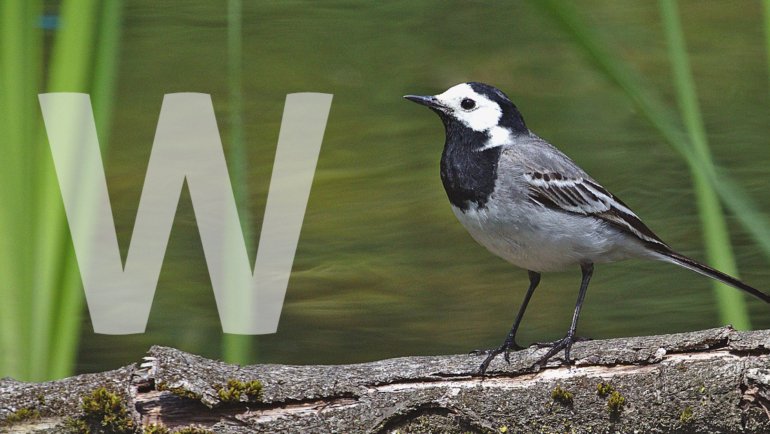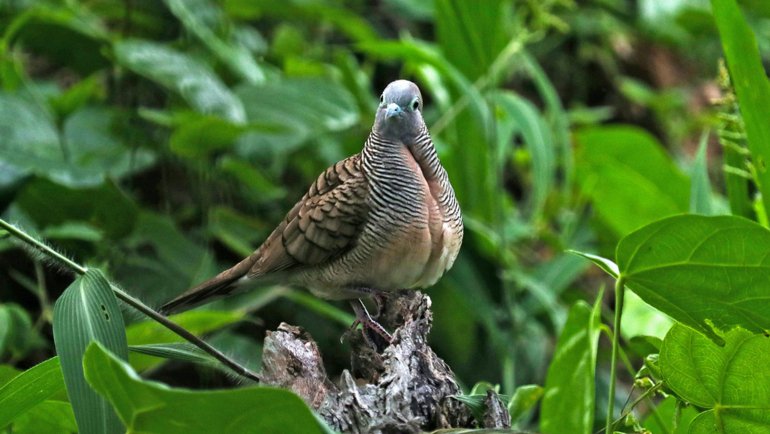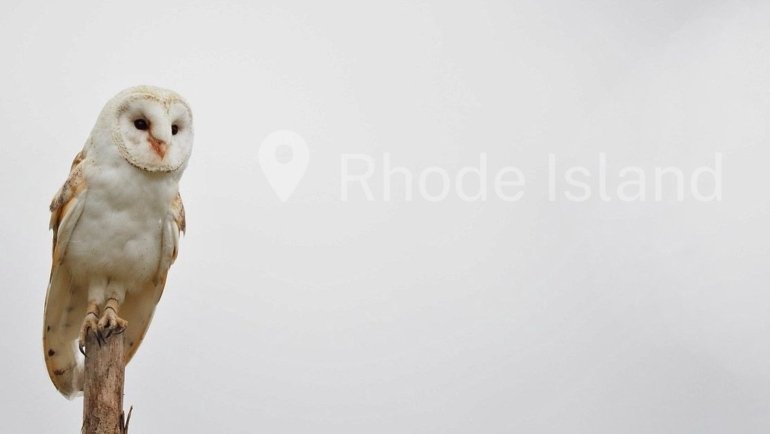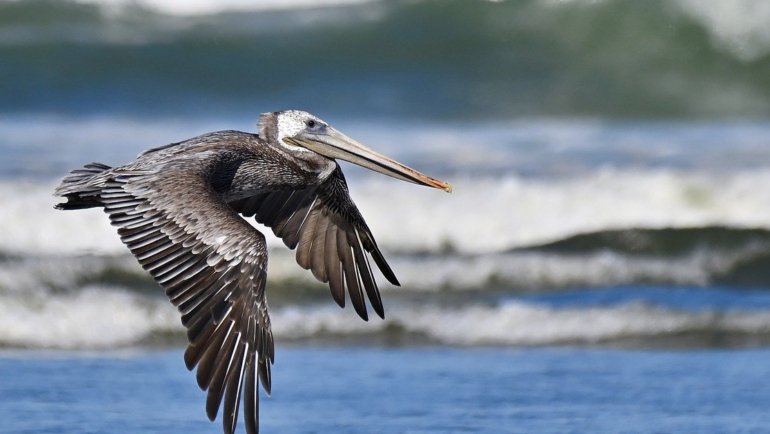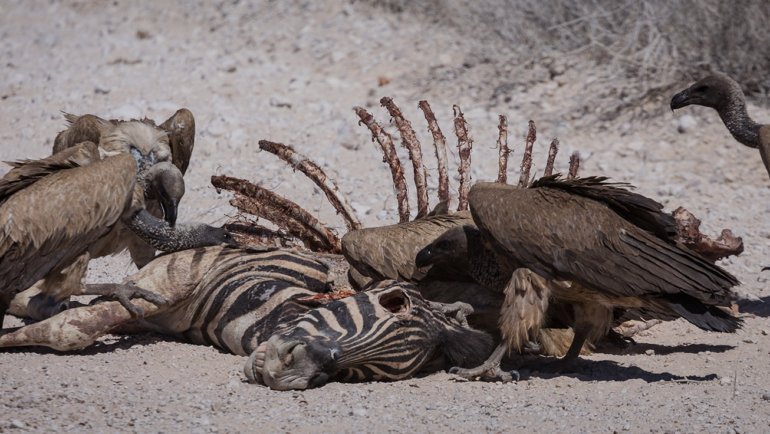From its expansive wetlands to its lush forests and coastal beaches, Florida is a state that’s rich in natural beauty and diverse wildlife. This includes a captivating array of owl species, each with its unique characteristics and behaviors.
This article will guide you through the different species of owls found in the Sunshine State, providing insights into their sizes, habitats, and when you’re most likely to spot them.
Owl Species Found in Florida
Great Horned Owl

- Scientific name: Bubo virginianus
- Size: 46-63 cm (18-25 inches)
- Weight: 910-2500 grams (2-5.5 pounds)
- Wingspan: 91-153 cm (36-60 inches)
- Time of the year: Year-round
The Great Horned Owl, also known as the “tiger owl,” is a powerful predator that can be found across North America, including Florida. They are a year-round resident, inhabiting woodlands, swamps, and even urban parklands.
Distinguished by their large size and prominent ear tufts, the Great Horned Owl is known for its wide diet, feeding on a variety of prey from small mammals to birds, reptiles, and amphibians. Their deep, hooting call is a familiar sound in Florida’s night, adding an air of mystery to their surroundings.
Did you know? The Great Horned Owl is Florida’s largest owl. Despite their large size, these owls are incredibly agile flyers. They can take off vertically from the ground, and their silent flight enables them to sneak up on unsuspecting prey.
Eastern Screech Owl
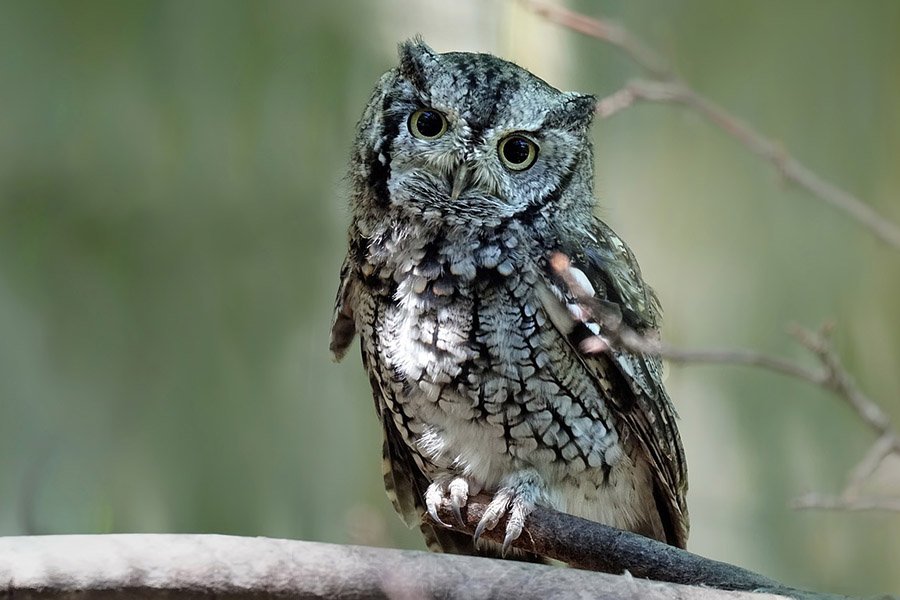
- Scientific name: Megascops asio
- Size: 16-25 cm (6.3-9.8 inches)
- Weight: 121-244 grams (4.3-8.6 ounces)
- Wingspan: 46-61 cm (18-24 inches)
- Time of the year: Year-round
The Eastern Screech Owl is a petite, yet character-filled species, making its home year-round in Florida. They are commonly found in a variety of settings including wooded areas, parks, and even suburban gardens.
Their small size and well-camouflaged plumage make them a challenging find, but their distinctive call—a soft trill followed by a downward whinny—often gives them away. They primarily hunt for insects, small rodents, and birds.
Did you know? Despite their name, Eastern Screech Owls don’t screech. Their name comes from their distinctive call, which resembles the whinny of a horse more than a screech.
Barred Owl

- Scientific name: Strix varia
- Size: 40-63 cm (16-25 inches)
- Weight: 470-1050 grams (1-2.3 pounds)
- Wingspan: 96-125 cm (38-49 inches)
- Time of the year: Year-round
The Barred Owl is a familiar sight and sound within the forested regions of Florida. Recognizable by their soulful brown eyes and hooting call, these owls are common inhabitants of mature forests, especially those near water bodies.
Active primarily at night, the Barred Owl hunts a varied diet, including small mammals, birds, and amphibians. They are quite territorial and can often be spotted perched silently in trees, waiting patiently for their prey.
Did you know? The Barred Owl has a memorable call that sounds like “Who cooks for you? Who cooks for you all?” This call is often a giveaway of their presence, even when they are difficult to spot.
Burrowing Owl
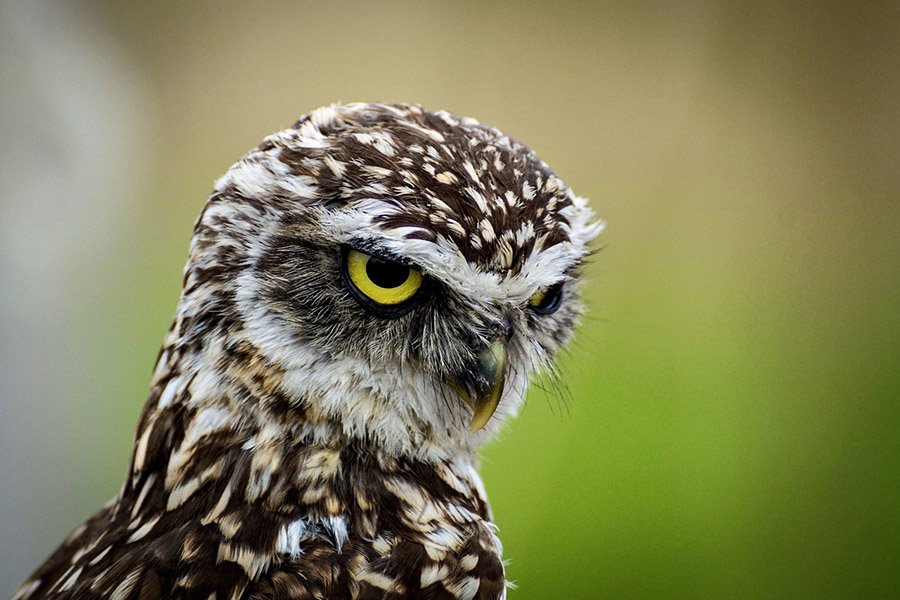
- Scientific name: Athene cunicularia
- Size: 19-28 cm (7.5-11 inches)
- Weight: 140-240 grams (4.9-8.5 ounces)
- Wingspan: 50.8-61 cm (20-24 inches)
- Time of the year: Year-round
The Burrowing Owl, unlike most other owls, is a ground-dwelling bird found year-round in Florida, especially in the open landscapes of prairies, pastures, and even airports. They are known for their distinctive burrows, which they dig or take over from other small mammals.
With their long legs, bright yellow eyes, and a signature white “eyebrow” above each eye, these owls have a distinctive appearance. They feed on insects, rodents, and small reptiles.
Did you know? The Burrowing Owl is one of the smallest owls found in Florida and one of the few owl species that are active during the day, especially in the morning and late afternoon.
Short-Eared Owl
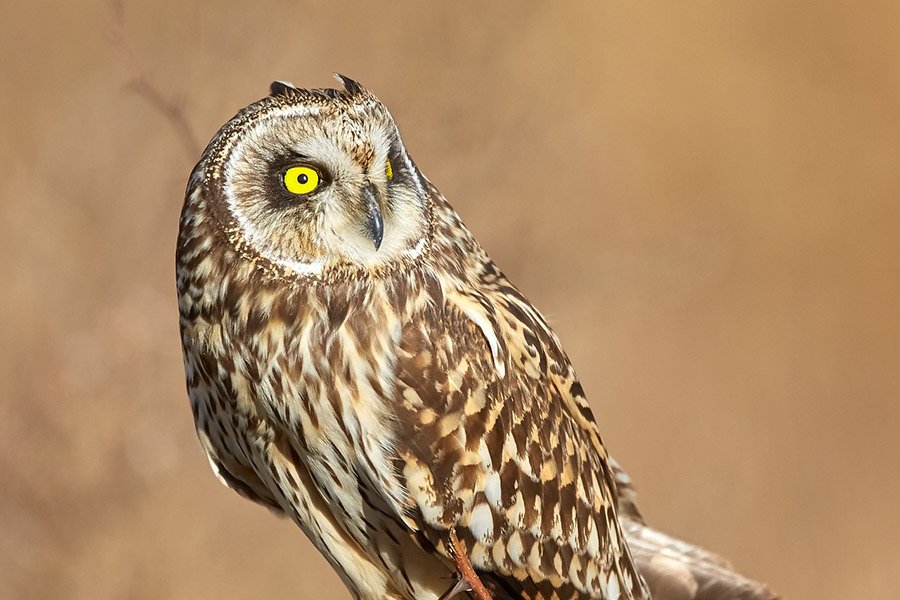
- Scientific name: Asio flammeus
- Size: 34-43 cm (13.4-16.9 inches)
- Weight: 206-475 grams (7.3-16.8 ounces)
- Wingspan: 85-110 cm (33.5-43.3 inches)
- Time of the year: Winter
Short-Eared Owls are primarily winter visitors to Florida, though they can occasionally be found year-round. They prefer open country, including marshes, grasslands, and agricultural fields, where they nest on the ground.
Despite being most active at dusk and dawn, these owls are known to hunt during the day. Their diet consists primarily of small mammals, but they’ll also eat birds and insects.
Did you know? The “ears” of the Short-Eared Owl are just small tufts of feathers that are often difficult to see, giving the bird its name. Despite their name, they actually have large ears located on the sides of their head!
Barn Owl
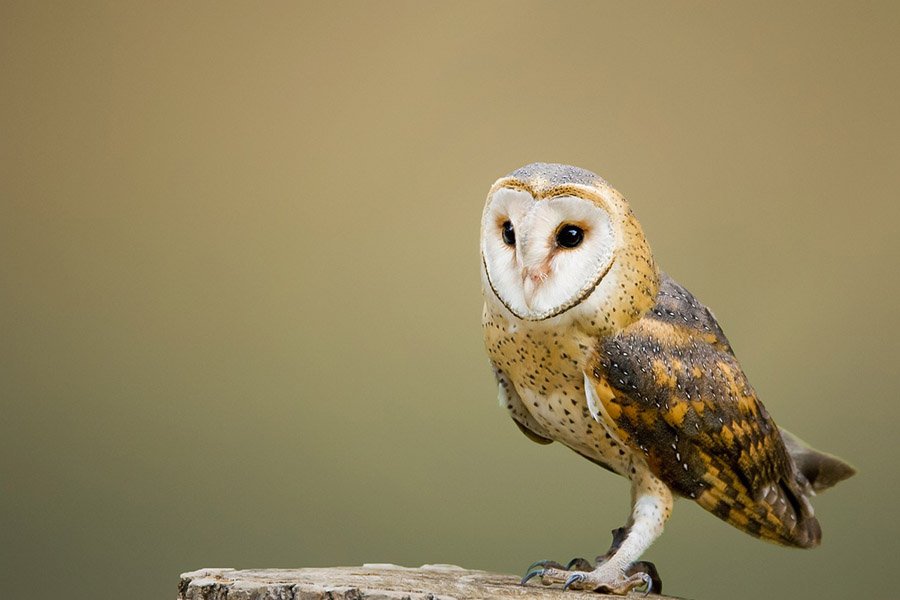
- Scientific name: Tyto alba
- Size: 33-40 cm (13-15.7 inches)
- Weight: 430-620 grams (0.94-1.36 pounds)
- Wingspan: 80-95 cm (31.5-37.4 inches)
- Time of the year: Year-round
The Barn Owl is a common sight across Florida. Known for their pale color, unique heart-shaped face, and eerie shriek, these owls can be found in a variety of habitats including farmland, forests, and marshes. As the name suggests, they often make their homes in barns and other abandoned buildings.
Barn Owls are nocturnal and are skilled hunters, relying on their acute hearing to catch prey in the dark. Their diet consists mostly of small mammals, particularly rats and mice.
Did you know? Barn Owls swallow their prey whole—skin, bones, and all, and they eat up to 1,000 mice each year. This makes them a friend to farmers, who appreciate their appetite for pests.
Northern Saw-Whet Owl
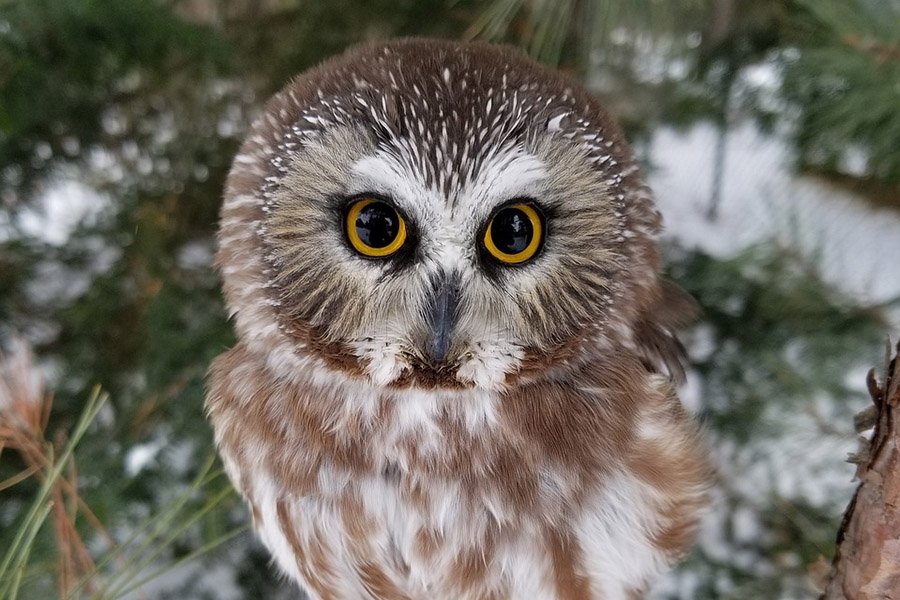
- Scientific name: Aegolius acadicus
- Size: 17-22 cm (7-8.7 inches)
- Weight: 54-151 grams (1.9-5.3 ounces)
- Wingspan: 42-56.3 cm (16.5-22.2 inches)
- Time of the year: Rare in Florida, occasional sightings in winter
The Northern Saw-Whet Owl is a tiny owl that is rarely seen in Florida, but occasional winter sightings do occur. These owls prefer dense forests where they roost just above eye level.
Despite their small size, they are effective predators, with a diet that consists mostly of small mammals, especially mice. These owls are notoriously difficult to spot due to their small size and nocturnal nature.
Did you know? The Northern Saw-Whet Owl gets its name from its call, which some say sounds similar to a saw being sharpened on a “whetting” stone.
Where & How to Observe Owls in Florida
Florida’s diverse landscapes make it an ideal habitat for a variety of owl species. Some locations for owl spotting include:
- Everglades National Park: Home to a variety of bird species, this expansive wetland offers opportunities to spot Barred Owls, Barn Owls, and the unique Burrowing Owl.
- Big Cypress National Preserve: This swampy wilderness is a good location for Great Horned Owls and Eastern Screech Owls.
- Apalachicola National Forest: The largest forest in the Florida panhandle, this location is ideal for spotting Barred Owls and possibly the rare Northern Saw-Whet Owl.
- Paynes Prairie Preserve State Park: This park is home to many types of wildlife, including a variety of owl species such as the Great Horned Owl and the Short-Eared Owl.
Different owl species favor different habitats within the state:
- Forests and woodlands: Great Horned Owl, Eastern Screech Owl, Barred Owl.
- Open fields and grasslands: Short-Eared Owl, Burrowing Owl, Barn Owl.
Quick Tips For Owl Spotting
- Night or twilight is best: Most owls are active at night or during the twilight hours of dawn and dusk.
- Use your ears: Owls are vocal, especially during mating season. Learn their calls to help identify them.
- Look for signs: Look for signs of owl activity such as pellets, whitewash (droppings), or feathers.
- Take a guide: Consider a guided tour or a bird-watching group for the best chances of spotting these elusive birds.
- Be patient: Finding owls can take time, so be patient and enjoy the experience.
- Respect the owls: Keep a respectful distance and never disturb an owl’s nest.
Remember, owl spotting is a wonderful way to connect with nature and learn about these fascinating creatures. Happy birdwatching in Florida!
Owls in Other States
- Alabama
- Alaska
- Arizona
- Arkansas
- California
- Colorado
- Connecticut
- Delaware
- Florida
- Georgia
- Hawaii
- Idaho
- Illinois
- Indiana
- Iowa
- Kansas
- Kentucky
- Louisiana
- Maine
- Maryland
- Massachusetts
- Michigan
- Minnesota
- Mississippi
- Missouri
- Montana
- Nebraska
- Nevada
- New Hampshire
- New Jersey
- New Mexico
- New York
- North Carolina
- North Dakota
- Ohio
- Oklahoma
- Oregon
- Pennsylvania
- Rhode Island
- South Carolina
- South Dakota
- Tennessee
- Texas
- Utah
- Vermont
- Virginia
- Washington
- West Virginia
- Wisconsin
- Wyoming
